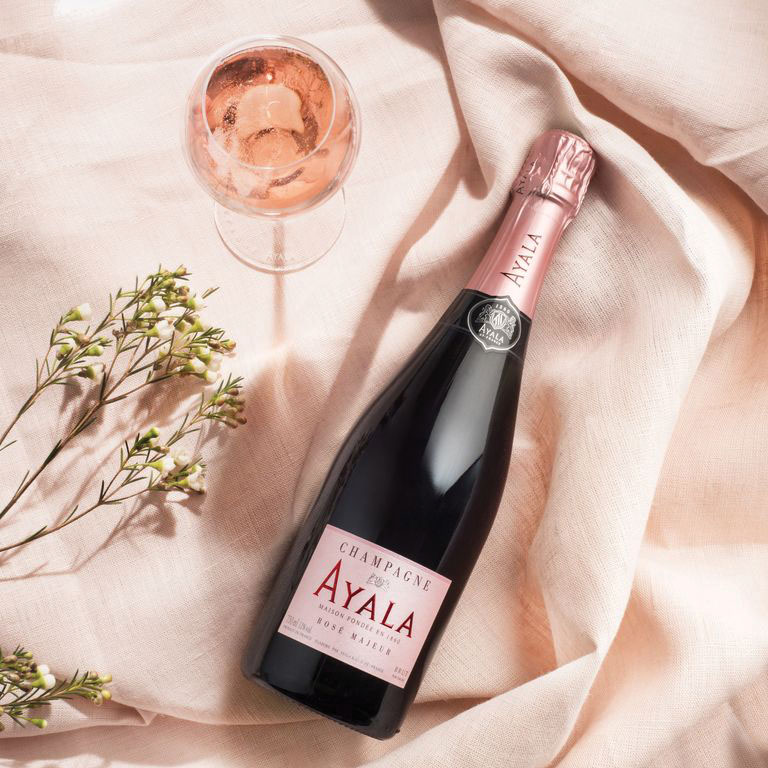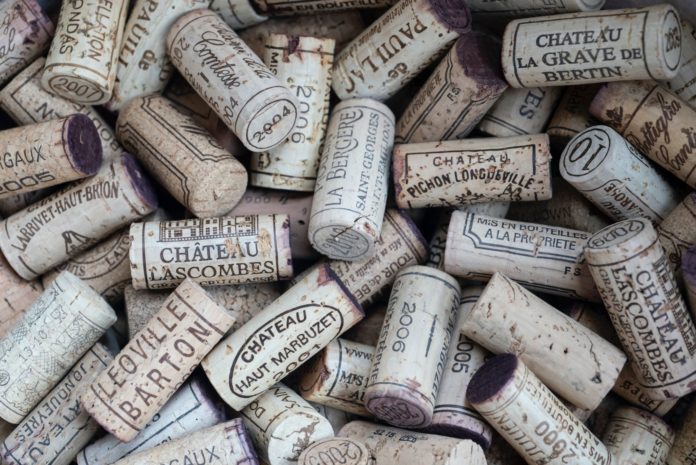Our Spirit of France coverage continues with a deep dive into four of the most popular French wine regions.
France is renown as one of the great wine-producing countries in the world. From Alsace and Champagne in the north to the Languedoc and Provence in the south, French winermakers uphold long-standing traditions as well as embrace new innovations. Here’s a look at four of the popular French wine regions.
Burgundy
Long considered the global benchmarks, chardonnay and pinot noir reign supreme in this classic wine region of eastern France. Cultivation of these varietals likely started in the second century A.D.; the region’s wine industry is historically intrinsically linked to the Roman Catholic Church.
Vineyards were first donated to the church in 586 A.D. Monasteries and monks who tended to vineyard and cellar operations over the centuries bestowed wine terms as “cru,” and were mindful of the concept of terroir.
Wines from any of the hundred Bundundian appellations have traditionally been labeled with the village or area. But winemakers have been responding to confused consumers by also listing the grape.
The Beaujolais region at the southern end of Burgundy “has so much to offer both the serious and the newbie,” says Jill Weber, owner of Philadelphia’s Jet Wine Bar, Rex at the Royal, Sor Ynez and Cafe Ynez. She thinks that the gamay varietal may finally be poised to have its breakout year. “Gamay can be a fun, fruity frolic in a glass, but it can also be a complex mixture of intense red berries, delicate flowers and wild herbs and spice.”
In general, less is becoming more with both white and red Burgundy. “Heavily oaked, manipulated, overproduced wine is falling out of style with both customers and sommeliers,” says Darlin Kulla, beverage director for the Washington, D.C.-based restaurant group Knead Hospitality + Design. “The wines are better made in the vineyards and much more expressive.”
And keep your eye out for 2015 releases, Kulla advises. The vintage’s dry start and late meant wines needed a little time to come into their own, but are now truly showcasing their potential.
Burgundy Bottles to try:
2020 Julien Sunier Wild Soul Beaujolais Villages ($28.99): Organic farming and cold semi-carbonic maceration results in freshness, vibrancy and a pleasant angular quality on the palate.
2019 Bouchard Père & Fils 2019 Réserve Chardonnay ($28): An aromatic white Burgundy with crisp apple, white flowers and food-friendly acidity.
2017 Domaine Cellier aux Moines, Mercury Blanc ‘Les Margotons’ ($40): A rare white from the Mercurey appellation, with balanced oak, ripe apple and creaminess.
2018 Domaine Pavelot Savigny-les-Beaune Rouge ($58): Black cherries and red raspberries balance minerality, spice and a whiff of forest floor.
Bordeaux
The hallmark of Bordeaux: well-structured, complex reds that can be feisty in their youth but tempered, balanced, smooth and nuanced after a few years — or decades — in the bottle. And while there is no shortage of high-end classified growth offerings with staggering age-worthiness, this storied French wine region also offers surprises to be discovered.
Bordeaux wine production dates back two millennia after the Romans conquered Gaul and established vineyards for the thirsty soldiers. Though a phylloxera outbreak decimated the industry in the late 1800s, it bounced back.
Today the Bordeaux region touts 5,500 winegrowers and 110,000 hectares under vine, and more than 65% of vineyards have a certified environmental approach.
Though 85% of the industry focuses on red blends, there are also understated, food-friendly whites using sauvignon blanc and semillon, as well as luscious, late-harvest dessert wines. A new generation of winemakers has been making an impact in sustainability practices and new styles.
“Bordeaux is developing a range of modern reds that are more supple, fruity, expressive, less oaky, reflecting terroir,” says Christophe Chateau, spokesperson at the Conseil Interprofessionnel du Vin de Bordeaux (CIVB).
Jessica Green, founder of Wine Vie Natural Wine Consulting & Events and owner of Down the Rabbit Hole Wine Boutique in Sayville, NY, agrees. “My customers are shopping for Ôdrink now’ wines — they are not looking for wines to cellar,” she says. “This generation is very curious about wine and want to explore outside of merlot, cabernet sauvignon and cabernet franc with indigenous grapes and easy drinking styles.”
Temperature increases and shorter growing cycles related to climate change have resulted in new permitted plantings in 2021 of four red varietals (arinarnoa, castets, marselan and touriga nacional) and two whites (alvarinho and liliorila). This translates to exciting future opportunities for a region also steeped in the past.
Bordeaux Bottles to try:
2020 Château Roquefort Bordeaux Blanc ($15): A blend of 81% sauvignon blanc and 19% semillon full of flinty minerality and tart green apple.
2018 Château Haut-Rian Côtes de Bordeaux ($19): A blend of merlot and cabernet sauvignon whose austere tannins and black fruits hint at what some aging will do.
2018 Château des Combes Bordeaux Rouge ($14): Red fruit spice and vanilla is joined by soft, approachable tannins.
2015 Château Simon-Cuvee Excepionelle Sauternes ($60/375ml): Made in the Barsac region from old vine semillon, sauvignon blanc and muscadelle, it shows honeyed apricot and juicy orange.
Loire Valley
This 175-mile region is dotted with 300 châteaux — former playgrounds and bucolic havens of escape from Paris for French royalty. Now on the UNESCO World Heritage List, the Loire Valley boasts the country’s longest river (the eponymous Loire river, which has a moderating effect on the terroir), the cradle of the French language and a site of world-class winemaking dating back to Roman times.
Current statistics cite 3,700 winegrowers and 57,400 hectares of vineyards, with nearly 30% farmed either sustainably or organically. The Loire often lurks in the shadows of its showier cousins Burgundy and Bordeaux, but that can be welcome news for oenophiles who prefer varietally bottled offerings to blends, comprised of grapes whose aromas, flavors and crisp acidity shine through and pair effortlessly at the table.
“Chenin blanc is extremely aromatic with notes of orchard fruits and honeysuckle, nice structure and — depending on the style — can have a luxuriously silky mouthfeel,” says Rebecca Carey, regional food and beverage director for international hospitality company Lore Group in Washington, D.C. Look to appellations including Anjou, Saumur and Vouvray for high-quality chenin, but also seek out melon de bourgogne and sauvignon blanc, especially mineral-driven versions from Sancerre.
On the red side, cabernet franc (locally called Breton) is grown mainly in Anjou-Saumur and Touraine — most famously in the village of Chinon. Youthful styles are light, refreshing and juicy, with aromas of cherries, raspberries and violets that open up nicely with a slight chill and pair well with barbecue, while more mature offerings are bigger, bolder and more complex.
The Loire is also France’s number-one producer for AOP sparkling wines outside Champagne: Crémant de Loire is the region’s traditional method answer to Champagne. Cabernet franc-based rosé tends to have higher acidity, more restrained fruit and lower alcohol than their Provençal counterparts, which make them a fun find for rosé-all-day drinkers.
“The winemakers here are some of the most humble in France, and the price tags reflect that,” Carey says. “It allows the consumer to have great products at great prices.”
Loire Valley Bottles to try:
2020 Le Charmel Loire Rosé ($12.99): Bright, crisp and fresh with hints of fresh strawberries and white peaches.
2016 Domaine Xavier & Agnes Amirault Le Fondis ($45.99): A 100% full-bodied cabernet franc with mature red fruit, a smooth and elegant palate and lengthy finish.
NV Gratien & Meyer Crémant de Loire Brut Rosé ($16): Red berries, mouthwatering acidity and a creamy fine mousse.
2020 J. de Villebois Sancerre ($37): A lively and herbaceous sauvignon blanc with minerality and a clean finish.
Champagne
Uncorked with a soft pop and poured into a flute, coupe or white wine glass with a large bowl, Champagne induces festive fun that’s infectious. But its celebratory overtone belies the fact that this renowned sparkler is actually a serious wine that can more than hold its own at the table — and in fact makes for some unexpected and surprising pairings.
“In the last year or two I have seen Champagne for consumption outside of just special events, becoming increasingly more popular,” notes Bobbie Burgess, wine director for Eat Local Starkville in Starkville, MS, and host of UnCorked on the local WCBI News. “People are realizing that they don’t have to wait for a special occasion to start popping good bubbles.”
Many of the houses got their start in the early to mid-1800s, and the next century saw explosive growth. Today there are 16,200 growers, 4,300 producers and 360 Champagne houses for over 34,300 hectares. Annually 244.1 bottles are shipped, 53.5% of those exported, and the caves are stocked with more than a billion bottles.
Knead Hospitality’s Kulla says that it’s refreshing to see more guests recognize and seek out grower producers such as Bereche and Pierre Péters. Also trending lately is a practice many producers abandoned in the 1950s: barrel-fermenting base wines for added complexity, mouthfeel and ageability.
To respond to climate change and sustainability challenges, the industry is taking measures including decreasing bottle weight by 20%, recycling and converting biomass. They’re also experimenting with more tolerant grape varieties and determining methods to better protect grapes and must from the heat.

Champagne Bottles to try:
NV Billecart-Salmon Brut Sous Bois ($85): Barrel-fermented and aged on the lees, with aromas of fresh citrus and white peaches and flavors of grilled brioche and toffee.
NV Domaine Bérêche et Fils – Brut Reserve NV ($60): Made with equal parts biodynamically grown chardonnay, pinot noir and meunier, with orange, stone fruit and minerality.
NV Champagne Henriot Blanc de Blancs ($65): Elegant aromas of delicate citrus, white peach, lemon curd and buttery brioche.
NV Champagne Ayala Rosé Majeur ($72): Made mostly with chardonnay, the low dosage keeps it elegant, generous and full of finesse.
Feature photo by Jean-Luc Benazet on Unsplash.
Kelly Magyarics, DWS, is a wine, spirits and lifestyle writer and wine educator based in the Washington, D.C. area.








